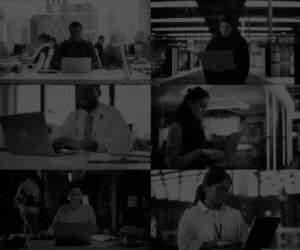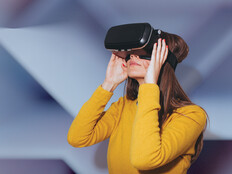Virtual reality headsets are no longer a novel technology. Over the past several years, their cost has generally come down, and usability has gone up. But for now, VR headsets remain a niche technology for meetings and collaboration.
VR headsets do have clear use cases in the business world, experts say, especially for meetings where participants need to visualize an object in 3D. For example, architects looking at building models or engineers collaborating on product design can work together and share information more easily than if they were simply looking at a drawing on a screen in a normal videoconference.
VR headsets are currently showing the most promise in the business world — and will continue to do so in the years ahead — according to Tuong Nguyen, an analyst on Gartner’s emerging technologies and trends team. They are often used in “high-consequence situations,” he says. These might include ensuring that someone new to working on a busy factory floor can first experience the environment in VR and practice their tasks instead of going onto the actual floor untrained, where they could potentially hurt themselves or others.
Headsets are also used as “a visualization tool for people whose job is to work in 3D,” especially for a captive audience, Nguyen says. For example, an executive could view a presentation on a new product in VR to visualize the object instead of having to look at a blueprint or 2D representation. “Those are the use cases that will show promise and will grow the most in the next three to six years,” he says.
Click the banner below to explore the solutions you need to give everyone a seat at the table.
How VR Headsets Can Aid Meetings
A November 2024 study from research firm Metrigy found that 17% of the 400 organizations surveyed were actively using VR or augmented reality hardware and software, and 16.5% planned to do so by the end of 2025.
Nguyen says his “sincere belief is that VR will be used increasingly over time, enterprises or otherwise,” but he also compared the technology’s use in the workplace to a stationary exercise bike: Many people might have one in their homes, but how much they use them can vary.
“I’ve used one before. Am I counted in this tally?” he says. “What if I use it once a week for 45 minutes? Do I count now? So, that’s kind of where it is.”
Besides for training, VR headsets are most useful in meetings for architects, engineers or anyone using computer-aided design software, Nguyen says. “Anything where you’re trying to shoehorn a 3D object into a 2D visualization, then back in your brain in a 3D structure,” he says. “It’s a visualization tool.”
VR Use for Collaboration Still Has Drawbacks
While VR headsets have clear applications for meetings and knowledge transfer, there are several things businesses need to be aware of as they consider adopting the technology.
One is cost. While the price of VR headsets has come down over the past few years, most still cost at least several hundred dollars each and can sometimes range above $1,000 per device. As a result, Nguyen says, they will be used for “discrete” work situations.
Another concern is the user experience. Some people who use VR headsets can experience “cybersickness,” which can feel much like motion sickness, featuring headaches, dizziness and other symptoms. “Is it worth it to you as an individual, given the consequences?” Nguyen asks.
And while some headsets now have a feature called VR passthrough, which allows users to see the real world and not just VR, Nguyen notes that this could create safety concerns in office settings. “How willing is an enterprise to allow its employees to wear blindfolds for any amount of the day?” he says.
Still, Nguyen says he does see promise for the technology. “The direction is good and the momentum is good, but again, it’s from a very small base.”












